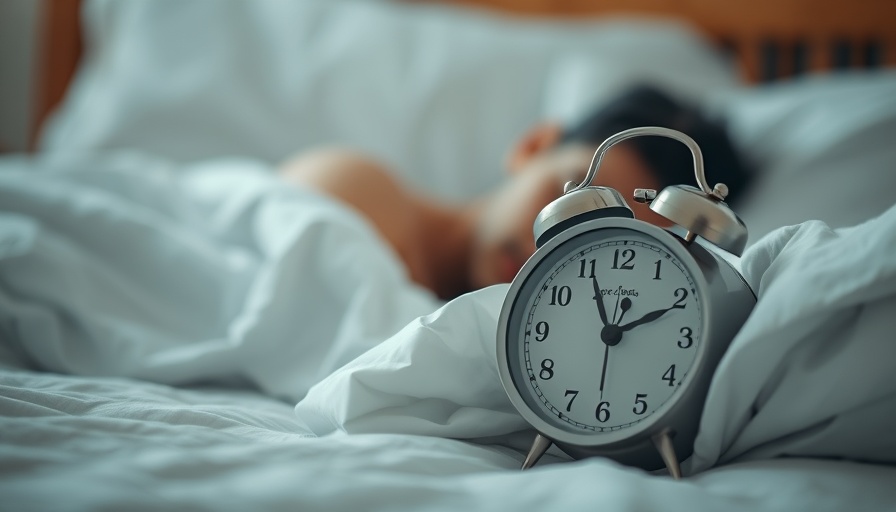
Understanding Sleep Apnea: A Common Condition
Every night, millions unknowingly interrupt their sleep as a result of obstructive sleep apnea (OSA). This common sleep disorder is characterized by repeated episodes of blocked airflow, often causing the affected individual to wake up gasping for air. Understanding OSA is crucial as it highlights the importance of effective treatments like CPAP machines.
The Mechanism Behind CPAP Machines
At its core, a CPAP (Continuous Positive Airway Pressure) machine offers a simple yet effective way to address the complexities of sleep apnea. Imagine your airway as a soft tent. When left unsupported, it can easily collapse. The CPAP machine delivers a steady stream of pressurized air, functioning like tent poles that keep the airway open. This method not only maintains airflow but also reshapes how the airway functions during sleep.
How CPAP Machines Help: Revealing the Anatomy
The wonder of the CPAP lies in its anatomical understanding. The upper airway is a collapsible structure, involving muscles and soft tissue, unlike the rigid lower airway that is supported by cartilage. Each night, as we relax and drift into sleep, the muscles naturally become less toned, which can lead to airway obstructions. Here’s where CPAP shines. By maintaining a consistent air pressure, it pushes the soft tissues outwards, keeping the airway clear and minimizing oxygen deprivation.
Personal Stories from CPAP Users
Many individuals who struggle with sleep apnea can share transformative stories about how CPAP machines have improved their lives. For instance, Sarah, a 37-year-old mother of two, recalls feeling exhausted daily until she discovered CPAP therapy. 'I never knew how much better I could feel after a full night's sleep,' she says. Users often report improved mood, increased energy levels, and a significant decrease in the severity of their symptoms. Stories like Sarah’s underline the invaluable impact of understanding and utilizing CPAP equipment.
Potential Side Effects: What You Should Know
While CPAP machines can provide numerous benefits, it’s essential to also be aware of possible side effects. Correct pressure settings are crucial; if set too low, they may not alleviate symptoms, while settings that are too high can induce discomfort and issues like aerophagia—swallowing air. Regular consultations with healthcare providers can ensure proper adjustments are made, maximizing the benefits of this device.
Emotional Wellbeing and Sleep Health
Beyond the physical benefits, it's vital to recognize how consistent sleep positively affects mental health and emotional well-being. Poor sleep is associated with increased anxiety and depression levels. By utilizing CPAP therapy, many individuals report not only better sleep but also enhanced resilience against stressors in their daily lives.
The Future of Sleep Recovery Technology
As technology continues to advance, new innovations are emerging in the field of sleep recovery. Future developments may include more comfortable, quieter machines that blend seamlessly into users' lifestyles, further improving adherence to treatment and enhancing sleep quality.
Conclusion: Taking Strides Towards Better Sleep
The journey toward improved sleep through devices like CPAP machines is an important one for individuals suffering from sleep disorders. By understanding how these machines work and why they’re so effective, you empower yourself to take action and prioritize better sleep. If you or someone you know suffers from sleep-disrupting conditions, consider discussing CPAP options with a healthcare provider to explore the pathway toward restful nights.
 Add Row
Add Row  Add
Add 




Write A Comment